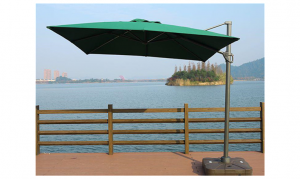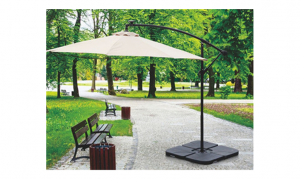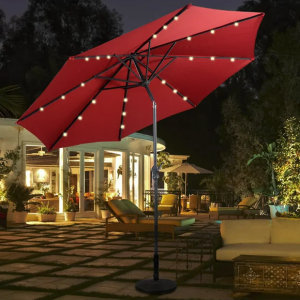More
Exploring the Pros and Cons of Olefin Fabric for Patio Umbrellas
Exploring the Pros and Cons of Olefin Fabric for Patio Umbrellas
Introduction:
When it comes to selecting the perfect fabric for your patio umbrella, Olefin is a popular choice due to its durability, weather resistance, and vibrant colors. With its unique properties, Olefin fabric offers several advantages but also has a few considerations to keep in mind. In this blog post, we will explore the advantages and disadvantages of using Olefin fabric as the surface material for your patio umbrella, helping you make an informed decision for your outdoor space.
Advantages of Olefin Fabric for Patio Umbrellas:
-
Excellent Weather Resistance: One of the key advantages of Olefin fabric is its exceptional weather resistance. It is highly resistant to moisture, mold, mildew, and fading caused by prolonged exposure to sunlight. Olefin fabric is inherently water repellent, making it ideal for outdoor use where occasional rain showers are common. The fabric dries quickly, minimizing the risk of mold or musty odors, and allows you to continue enjoying your outdoor space even after a rainstorm.
-
Colorfastness: Olefin fabric is known for its excellent colorfastness, meaning it retains its vibrant colors even when exposed to intense sunlight. The fibers are solution-dyed, which means the color is added during the manufacturing process, making it more resistant to fading compared to fabrics that are surface-dyed. This ensures that your patio umbrella maintains its visual appeal and adds a pop of color to your outdoor setting for an extended period.
-
Durability: Olefin fabric is highly durable, making it well-suited for patio umbrellas that will be exposed to various weather conditions and everyday use. The fabric has a high tensile strength, meaning it resists tearing, ripping, and abrasion. This makes Olefin fabric a reliable choice for outdoor environments where the umbrella may be subject to wind, friction, or accidental impact.
-
Easy Maintenance: Olefin fabric is relatively low-maintenance and easy to clean. Most stains can be removed with mild soap and water, and the fabric can be air-dried quickly. Olefin is also resistant to mildew and other microbial growth, reducing the need for frequent deep cleaning. With minimal effort, you can keep your patio umbrella looking fresh and inviting throughout the season.
Disadvantages of Olefin Fabric for Patio Umbrellas:
-
Limited Breathability: Olefin fabric may have limited breathability compared to natural fibers like cotton or linen. While the fabric provides shade and protection from the sun, it may not allow as much air circulation as some other materials. This can result in a slightly warmer environment under the umbrella, especially during hot summer days. However, this can be mitigated by positioning the umbrella in a well-ventilated area.
-
Prone to Pilling: In some cases, Olefin fabric may be prone to pilling, which is the formation of small balls or fuzz on the surface of the fabric. Pilling can occur due to friction or abrasion over time. However, regular maintenance, including brushing off debris and avoiding rough handling, can help minimize pilling and keep the fabric looking smooth and uniform.
Conclusion:
Olefin fabric offers several advantages as the surface material for your patio umbrella. Its exceptional weather resistance, colorfastness, durability, and easy maintenance make it a popular choice among outdoor enthusiasts. While Olefin fabric may have limited breathability and a potential for pilling, these considerations can be managed through proper positioning and regular care. By carefully evaluating the pros and cons, you can make an informed decision and select the right fabric that best suits your needs, ensuring a long-lasting and visually appealing patio umbrella for your outdoor space.











